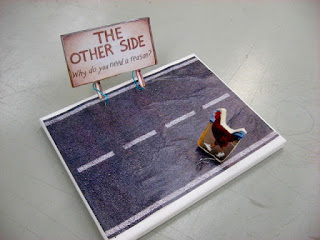Sculpture is a catch all term for artworks created as three dimensional objects, generally with no practical function. Traditionally, there were three main approaches. Carving is a subtractive process, where material is removed from a hard substance to reveal a desired size and shape. Sculptures made in stone or wood are typically carved. Another traditional process was casting, where a soft substance is put into a mold, and when it hardens, the finished sculpture can come out. This was the common way bronze sculpture was done. Modeling is where the artist takes a soft substance and works it by hand (or simple hand held tools) to create a sculpture. This is how clay works, though often the soft clay is later kiln fired to make it hard. A modeled clay piece can be also used to create a mold for casting metal, or as a reference for a larger stone carving. Molten glass can be modeled by hand (with tools- at 1700 degrees Fahrenheit it is too dangerous for bare hands) or shaped in molds.
Then came the 20th century, and all the rules changed. All those old processes are still done, traditional processes and materials, for those who want to learn them. However, many artists turned to new ideas and materials. One such change was assemblage, sculptures created by adding things together. Didn't even have to be traditional sculpture material. but could be what are commonly called "found objects", or just stuff that is around. Many of the earliest cave sculptures appear to have been inspired by the object used to make it- the shape of the original piece of wood, stone, or bone probably looked like the object being represented by the artist. This new form of sculpture didn't have to be marble or bronze, but scrap metal, plastic, or just existing manufactured objects could be turned into art. Shore area artist Lisa Bagwell made this egret from mostly plastic utensils and wooden pencils. She has also done wonders with things found as part of beach clean-ups, but I'm not going to talk about those here.
Build a whole environment to hold that piece, and you have what is commonly called an installation.
Slide Show-
Donatello A carved wooden sculpture, Mary Magdalene
Michelangelo A carved stone sculpture
Picasso a found object sculpture made from bicycle parts
Duane Hanson- A cast sculpture (plastics)
Joseph Cornell- Known for wall mounted box sculptures
Duchamp- Famous for developing the "ready-made" concept
Edward Keinholz -A classic installation sculpture
Our project is built on this idea of found object assemblage, which works well in our pandemic era, but I've been having students make things out of inexpensive or found objects since well before this, as in these student examples from past semesters. Back on April 9, 2020, everyone was sent a list of randomly generated phrases, right to your Kean mailbox, phrases from words drawn from hats. One was to be used for a mixed media collage. Choose a different one for this project, your 3D Final project.
As with the mixed media collage, it is up to you to interpret the phrase you are using. Choice of materials is completely up to you. Processes are completely up to you. Just a few rules-
1) The piece must be three dimensional, occupying space. Can be free standing, on a pedestal, or contained in a box. There are examples of all these options shown below.
2) The finished piece must depict your chosen topic in some way. (it's your interpretation)
3) You may use manufactured items that already exist, but your final piece must be unique to you, something you made yourself.
And that's pretty much it. It's due on May 8, 2020, our final class meeting. When you send in the photo, include your inspiring phrase, a list of materials, what it is about. I've attached a number of student examples here, so you can see how others have handled it, maybe get a few ideas of your own.
"Chicken Story"
Cut magazine images, hard rubber, etc.
Cut magazine images, hard rubber, etc.
"Against College"
Computer generated images, foam rubber, etc
Computer generated images, foam rubber, etc
"Sting Despair"
Clay, leaves, paint, cardboard box top
"Apetite for Distraction"
various found objects, clay
various found objects, clay
"Fallen Merchant"
Various found objects
Various found objects
"Planet Gone Wild"
styrofoam, wires, various found objects
styrofoam, wires, various found objects
"Plowing through the Nation"
wood, computer generated images, found objects
wood, computer generated images, found objects
"Impasse Changed"
Existing cardboard boxes, paper, found objects
Existing cardboard boxes, paper, found objects
"Let's Get Hearts"
Existing cardboard box, paper, paint, found objects
Existing cardboard box, paper, paint, found objects











































